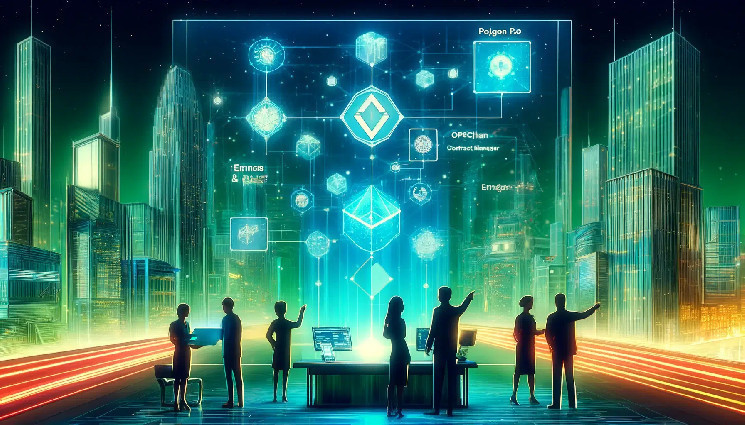Polygon Pushes for Web3 Scalability with Groundbreaking AG Layer for 1M TPS
- Polygon’s Sandeep Nailwal has disclosed in a recent presentation that the endgame infrastructure architecture of blockchain could look like its AggLayer.
- The Polygon’s AggLayer is said to provide low latency cross-chain transactions, scalability, security, and flexibility.
Co-founder of Polygon (MATIC) Sandeep Nailwal in a recent presentation at the AltLayer Roll-up Day, on July 10, pointed out the lack of seamless interaction between blockchains that affects the free flow of data and assets.
He further revealed that he had observed that all emerging individual blockchain architectures usually have a constant Transaction Per Second (TPS). To him, this was a big deal when Polygon was being launched in 2020. However, the high influx of users into the network invalidated the focus on TPS especially after the application went mainstream.
According to Sandeep, a Web3 internet scale adoption must have two features – infinite TPS, and no fragmentation. Also, his mission is to see all on-chain applications cross 100 million daily active users. However, no amount of TPS on any single chain would be enough. To him, this explains why Polygon has an Aggregate Layer (AggLayer). In explaining this, Sandeep defined AggLayer as a neutral decentralized service that allows synchronization and synchronized interoperability between chains while unifying liquidity.
AggLayer is basically a blockchain of blockchains and any sovereign chain can connect to it.
More on the Polygon AggLayer
According to Sandeep, AggLayer provides a shared bridge with a safety guarantee across the chains. In a nutshell, it provides low-latency cross-chain transactions and ensures scalability, security, and flexibility. Compared to Optimistic Rollups, AggLayer is designed for ZK-based systems and also avoids additional trust required by Optimistic Rollups.
In a separate post pointing to Polygon’s AggLayer, it was explained that this groundbreaking initiative takes advantage of the ZK-proofs for efficient communication among chains.
At its core, AggLayer leverages the power of zero-knowledge proofs (ZK-proofs). These cryptographic marvels allow for efficient communication by verifying the validity of information without revealing the actual data itself. This ensures secure and efficient cross-chain interactions.
AggLayer is also said to reshape the Polygon experience by abstracting the complexity of interchain communication. For some of the unique opportunities unlocked by this initiative, it is stated that the project boosts liquidity for new chains. This implies that the new Layer 1s and Layer 2s joining the Polygon network can easily leverage the vast liquidity facilitated by AggLayer as we formerly reported.
Secondly, it facilitates unprecedented scalability. This could enable the network to handle a significantly high volume of transactions by distributing the workload across multiple chains. Finally, it encourages cross-chain Symphony.
The Polygon 2.0 Aggregation Layer is a game-changer. Creating a unified, scalable, and developer-friendly network, empowers developers, enhances user experience, and paves the way for a thriving blockchain ecosystem. AggLayer is poised to revolutionize how we interact with and utilize blockchain technology, ushering in a new era of seamless and interconnected applications.
According to Sandeep, he cannot be completely sure that AggLayer is the endgame, however, he is certain that the endgame infrastructure architecture could look like the Polygon’s AggLayer.
At press time, Polygon (MATIC) was trading at $0.54 after declining by 1.2% in the last 24 hours.




